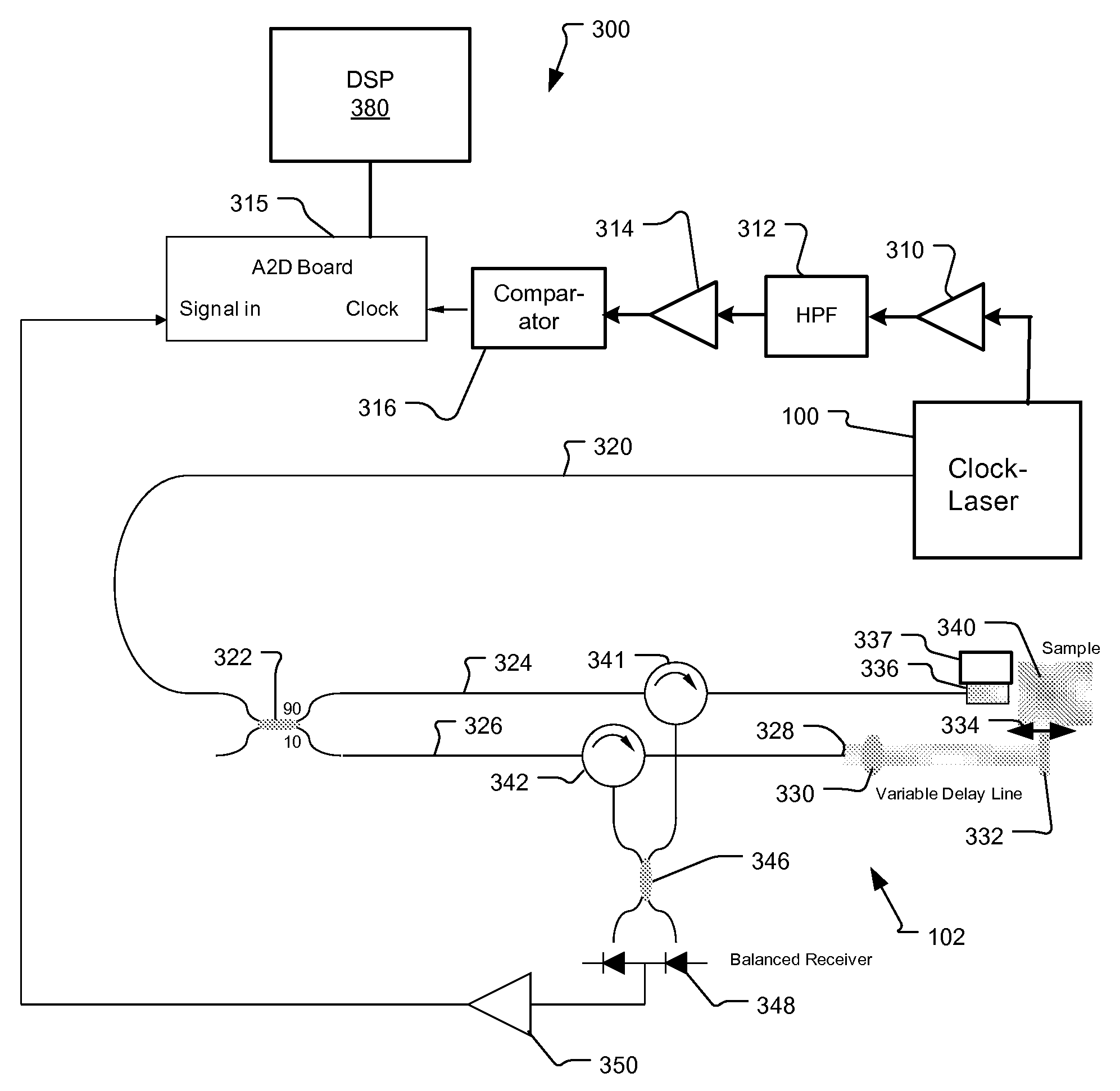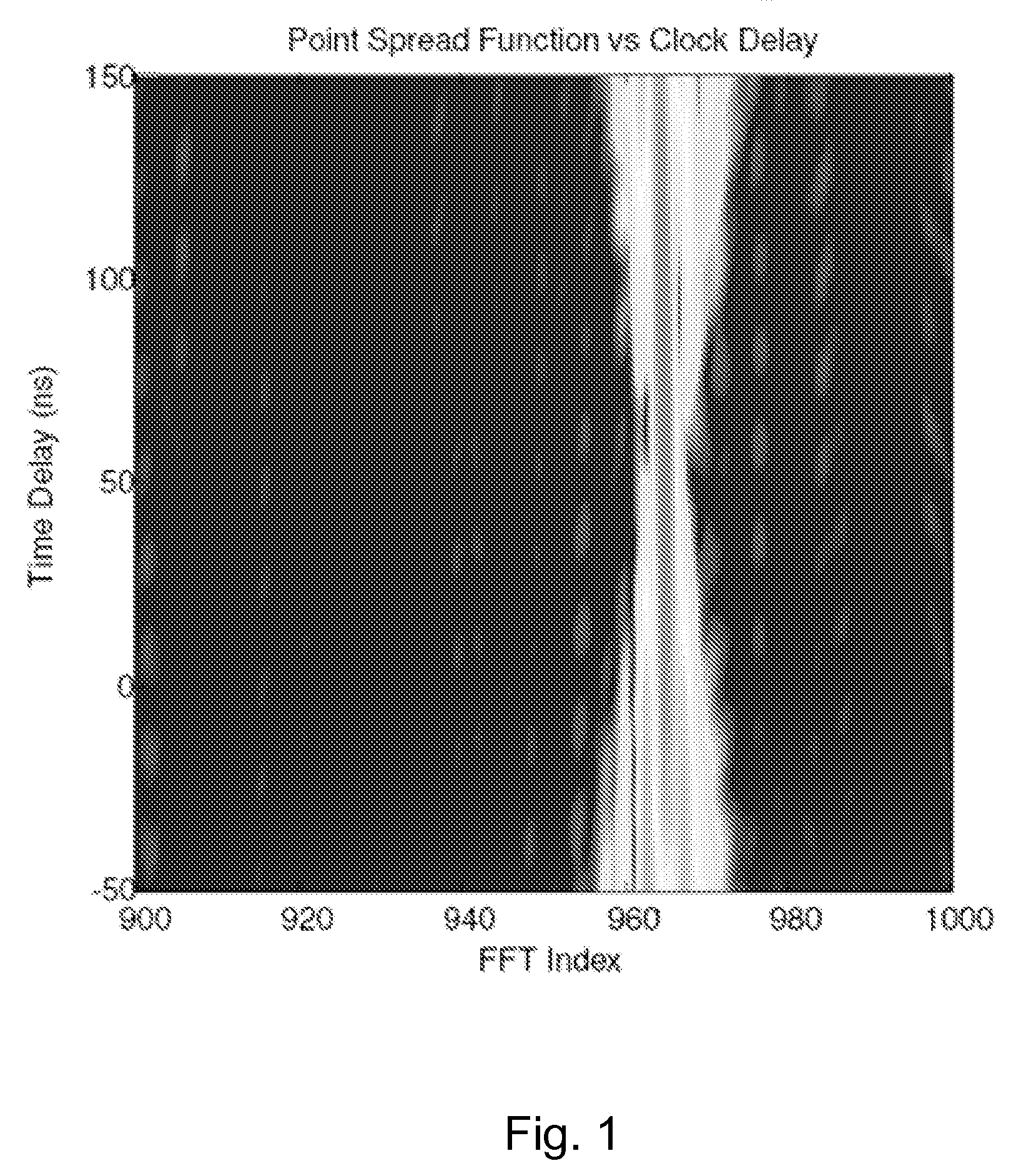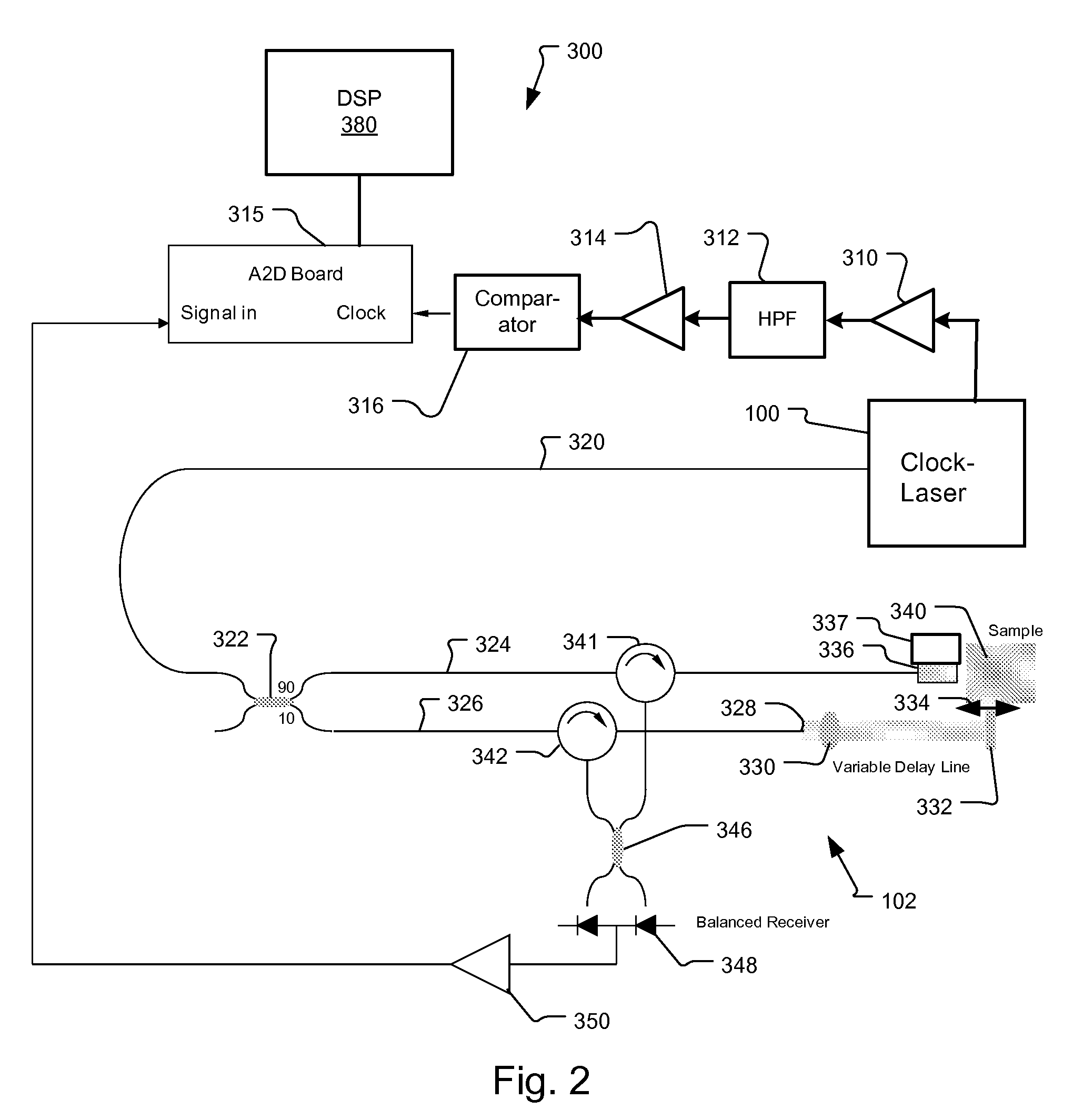Soft Clock Delay for OCT System and Method Therefor
- Summary
- Abstract
- Description
- Claims
- Application Information
AI Technical Summary
Benefits of technology
Problems solved by technology
Method used
Image
Examples
Embodiment Construction
[0024]FIG. 2 shows an optical coherence analysis system 300 using an integrated k-clock-swept source laser module 100 but without the typical delay for the k-clock. In the preferred embodiment, the k-clock-swept / source laser module 100 is constructed as described in incorporated U.S. patent application Ser. No. 12 / 396,099.
[0025]In more detail, a Michelson interferometer 102 is used to analyze the optical signals from the sample 340. Light from the swept source laser module 100 is output on fiber 320 to a 90 / 10 optical coupler 322. The tunable signal is divided by the coupler 322 between a reference arm 326 and a sample arm 324 of the system.
[0026]The optical fiber of the reference arm 326 terminates at the fiber endface 328. The light exiting from the reference arm fiber endface 328 is collimated by a lens 330 and then reflected by a mirror 332 to return back.
[0027]The external mirror 332 has an adjustable fiber to mirror distance (see arrow 334). This distance determines the depth ...
PUM
 Login to View More
Login to View More Abstract
Description
Claims
Application Information
 Login to View More
Login to View More - R&D
- Intellectual Property
- Life Sciences
- Materials
- Tech Scout
- Unparalleled Data Quality
- Higher Quality Content
- 60% Fewer Hallucinations
Browse by: Latest US Patents, China's latest patents, Technical Efficacy Thesaurus, Application Domain, Technology Topic, Popular Technical Reports.
© 2025 PatSnap. All rights reserved.Legal|Privacy policy|Modern Slavery Act Transparency Statement|Sitemap|About US| Contact US: help@patsnap.com



